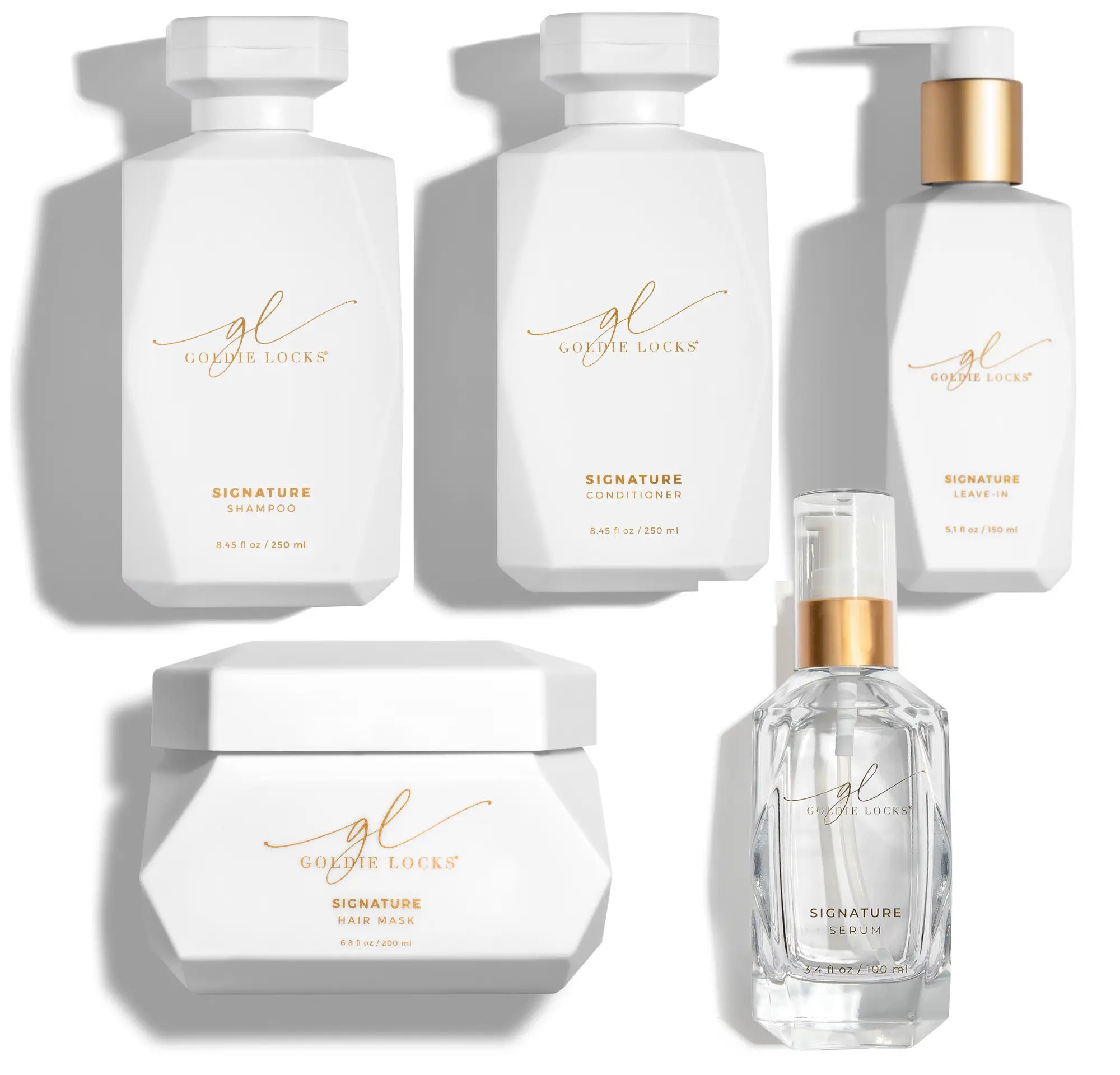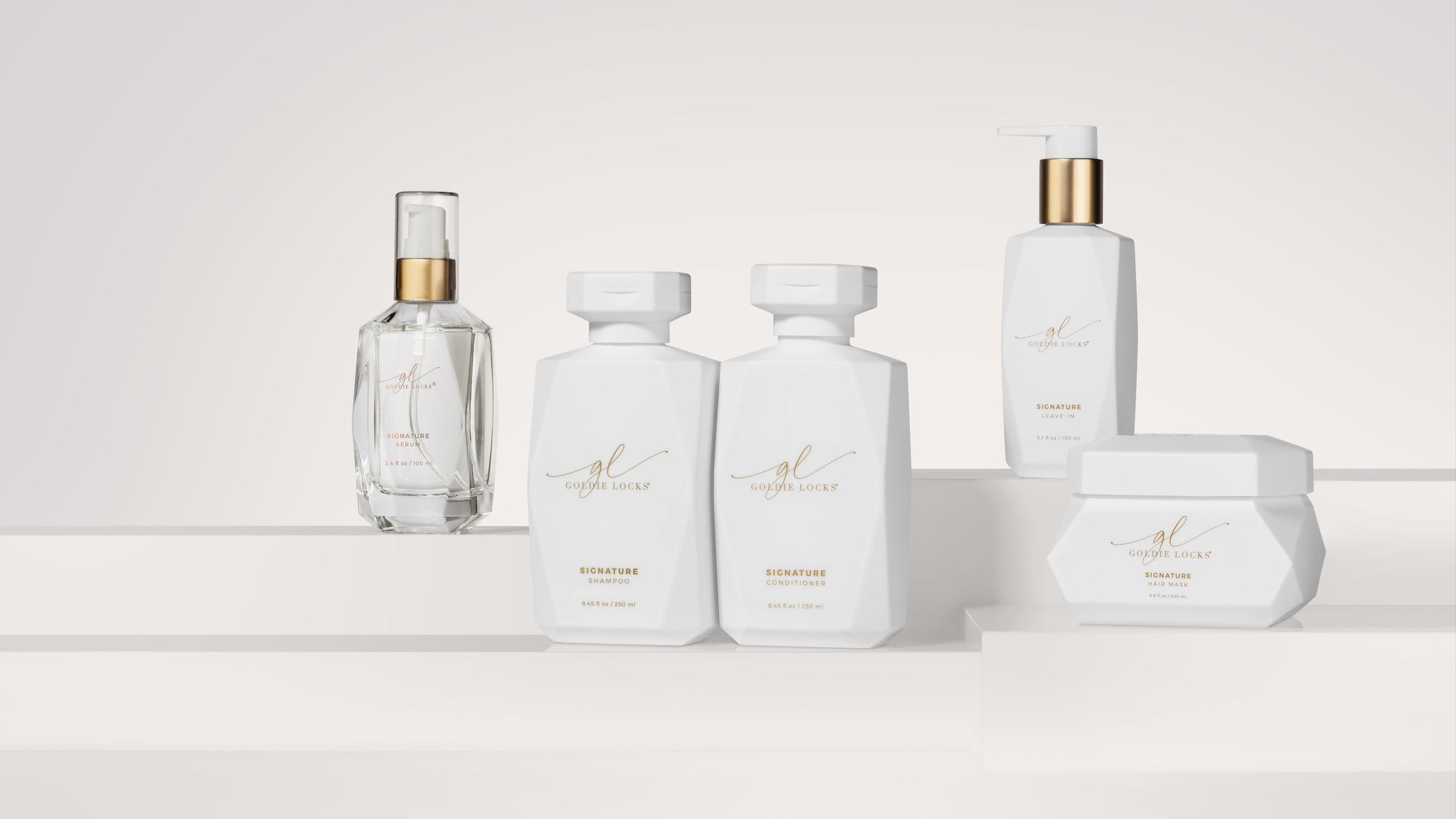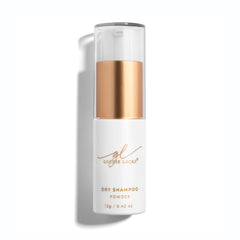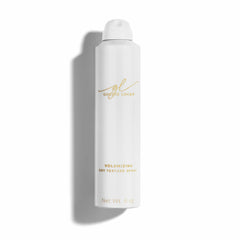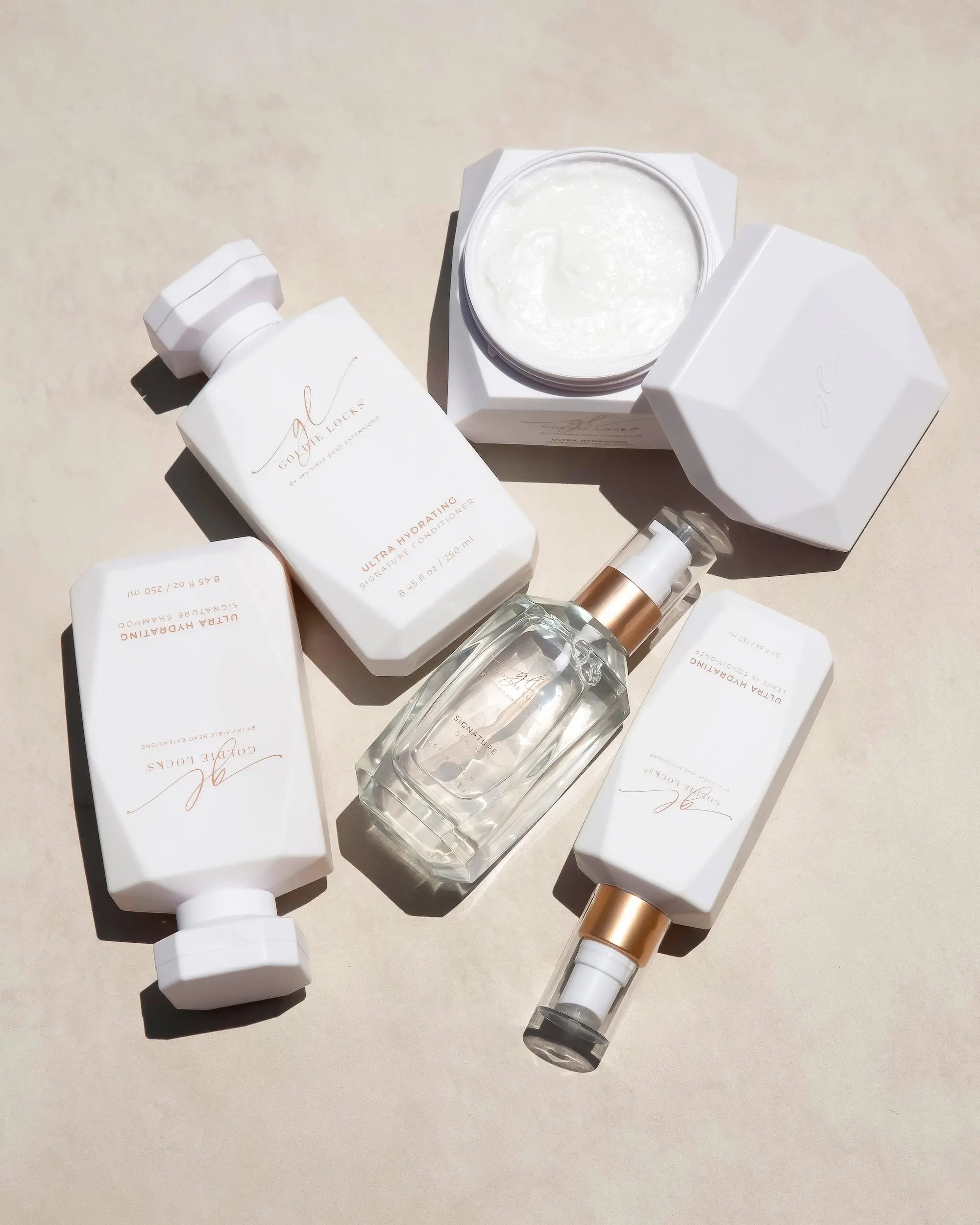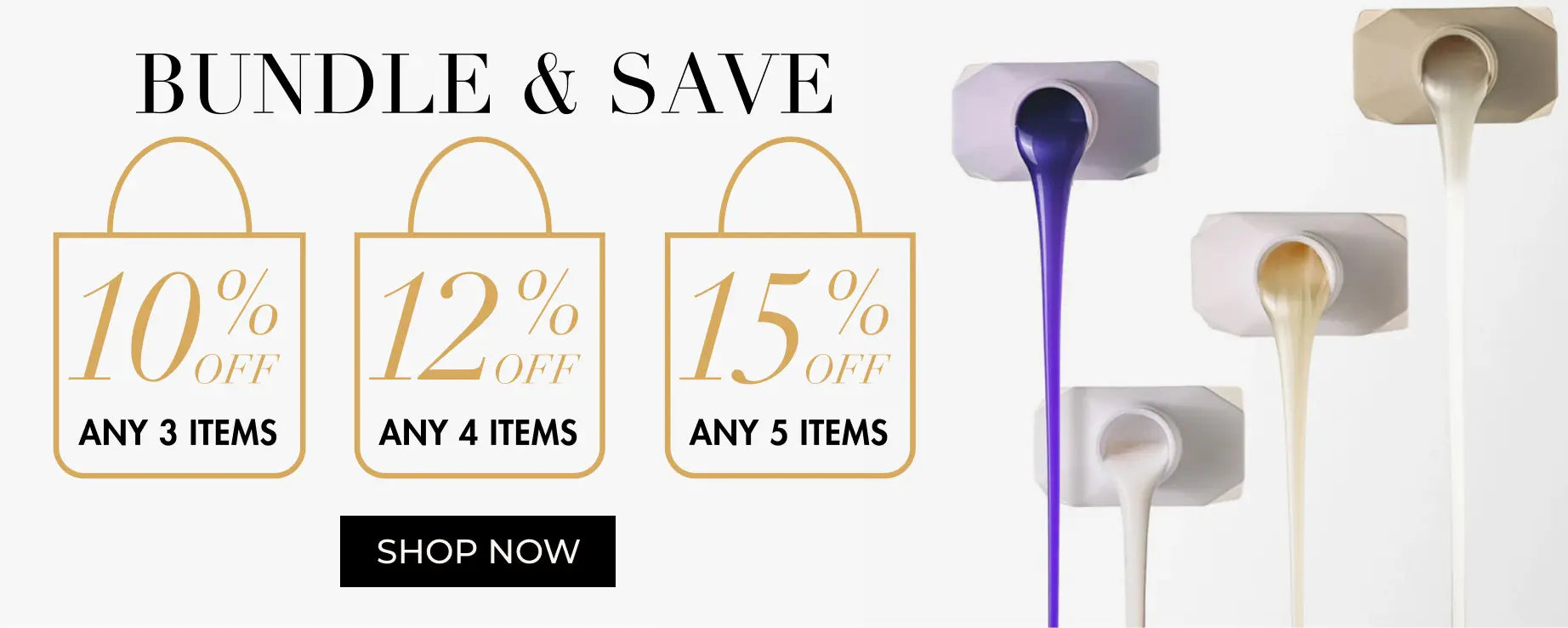Split ends are more than just a cosmetic nuisance; they're a silent cry for attention from our beloved locks. These seemingly small indicators of damage can wield immense power over the health and appearance of our hair, turning once vibrant strands into brittle shadows of their former selves. But what exactly are split ends, and why do they hold such sway over our hair’s wellbeing?
Split ends are a phenomenon most of us are all too familiar with. When the protective cuticle is worn away from the end of hair fibers, they begin to fray and split, signaling distress within our strands. Left untreated, split ends can pave the way for further damage, leaving hair looking lackluster, dry, and lifeless.
But fear not, for understanding is the first step to conquering. In the journey to reclaim the health and vitality of our hair, knowledge is our most powerful weapon. By incorporating specialized hair care products and techniques into our routine, we can transform frazzled strands into silky smooth locks that radiate health and beauty.
Index
The Science Behind Split Ends
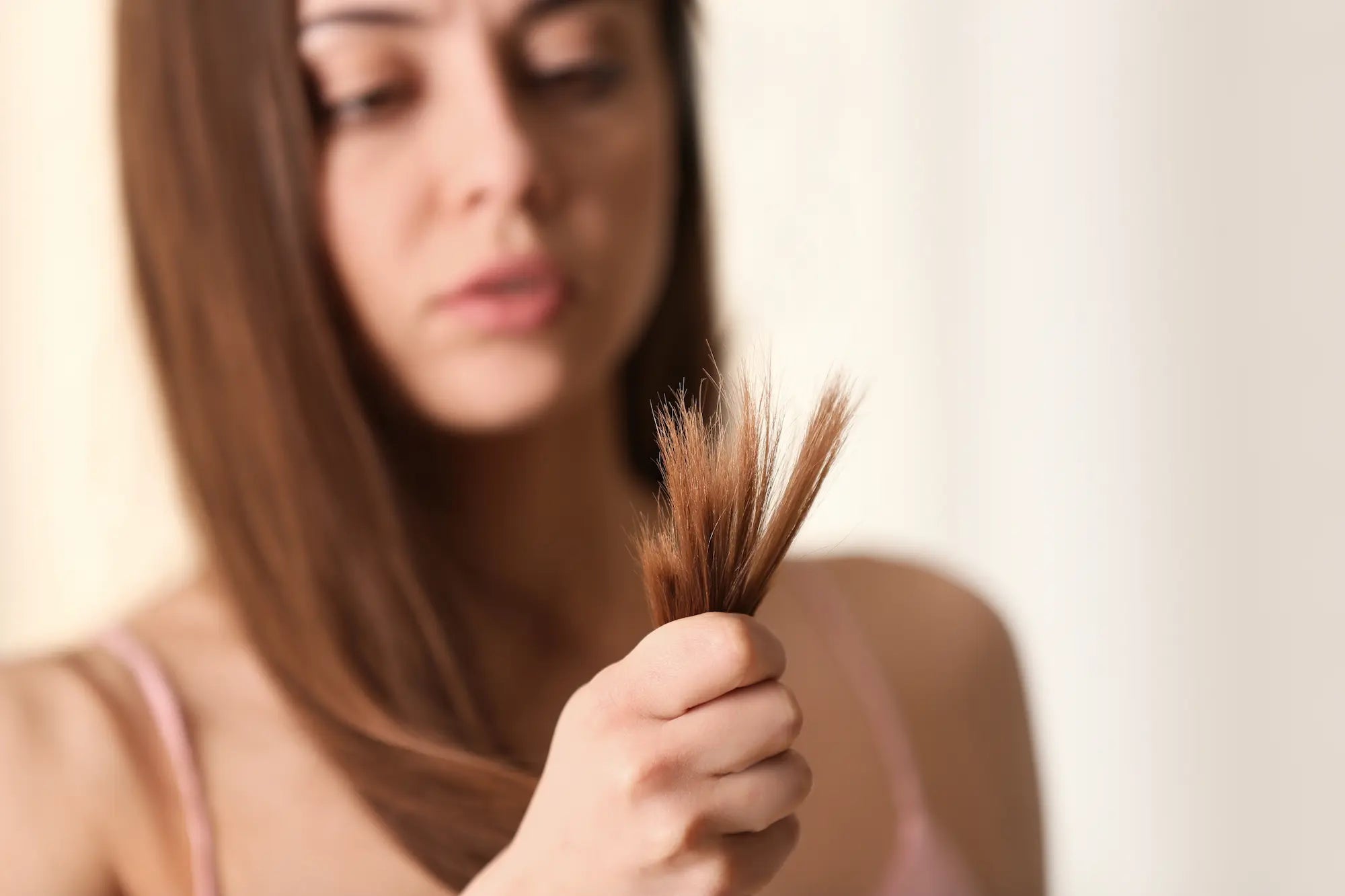
Split ends, scientifically known as trichoptilosis, are more than just a cosmetic issue. They occur at the oldest part of your hair, typically at the ends, where the protective cuticle layer is worn away, exposing the inner core. This leads to the formation of split ends, weakening the hair strand's integrity and causing it to fray.
Microscopic View of Split Ends
At the microscopic level, a healthy hair strand resembles a tightly packed, orderly structure. But when the hair experiences damage, the scales start to peel away and lift, weakening the strand's integrity. This eventually causes the hair to split into two or more strands, forming what we recognize as split ends.
Location and Manifestation
While we commonly see split ends at the tips of our hair, they can occur anywhere along the strand, making even mid-length hair vulnerable. The occurrence of split ends not only signifies the loss of the outer cuticle layer but also exposes your hair's cortex, making it susceptible to further damage and breakage.
Understanding the structure and formation of split ends lays the groundwork for effective prevention and treatment strategies. By recognizing the early signs and taking action, we can protect our hair's integrity and maintain its health and beauty.
Identifying Split Ends
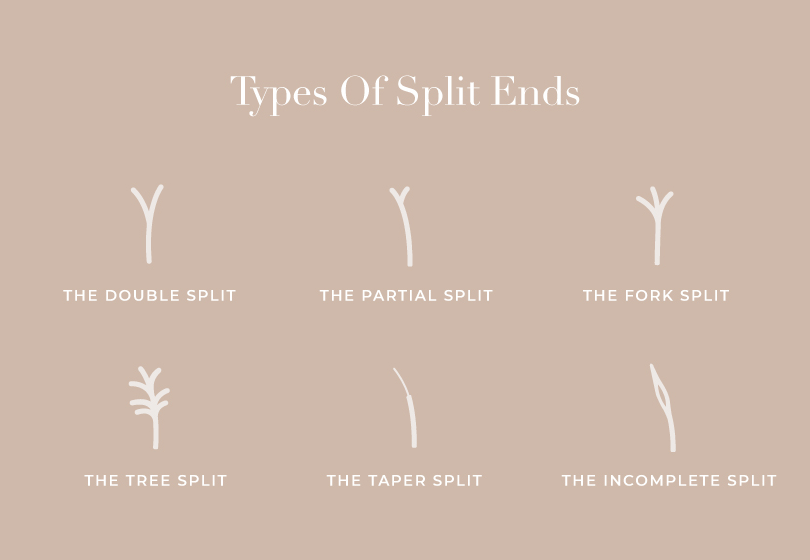
Recognizing split ends is the crucial first step in addressing them effectively.
Types
- Y-Split: The classic split end, where the strand divides into two.
- Tree Branch: Multiple splits occurring at different points along the strand.
- Candle Wick: A thinning and tapering at the end of the hair, resembling a candle wick.
- Incomplete Split: A partial split where the strand starts to divide but doesn't fully separate.
Texture Changes
Hair affected by split ends often feels rough and straw-like to the touch. When running your fingers through your hair, you may notice tangles and snags, particularly at the ends. These changes in texture serve as a call to action to address the presence of split ends and restore the health of your hair.
What Causes Split Ends?
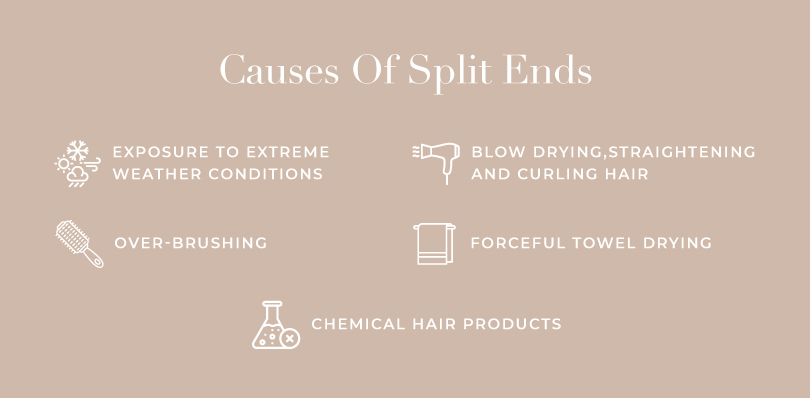
The culprits behind split ends are as varied as the strands they afflict. Understanding these can help us target our care more effectively.
Everyday Habits
- Heat Styling: The high temperatures from blow dryers, straighteners, and curling irons strip moisture from the hair, weakening the cuticle.
- Harsh Brushing: Brushing too vigorously, especially when hair is wet and vulnerable, can fray the hair shaft.
- Towel Drying: Rubbing hair dry with a towel creates friction, leading to cuticle damage.
Chemical Treatments
- Dyes and Bleaches: Chemicals used in dying and bleaching hair penetrate the cuticle, compromising its integrity.
- Perms and Relaxers: These treatments break down the hair's protein structure to change its texture, weakening the hair over time.
Environmental Factors
- UV Exposure: Just like our skin, our hair can be damaged by the sun's UV rays.
- Low Humidity: Dry air can strip moisture from the hair, making it more prone to splitting.
Dietary Influences
The health of our hair is also reflected in what we eat. Diets lacking in essential nutrients, such as vitamins, minerals, and proteins, can lead to weaker hair prone to damage.
Understanding the multifaceted nature of split ends empowers us to take targeted action to protect and nurture our hair. By addressing the root causes, we can develop a strategic approach to prevent and repair split ends, restoring our hair to its natural vitality and shine.
The Impact of Split Ends on Hair Health
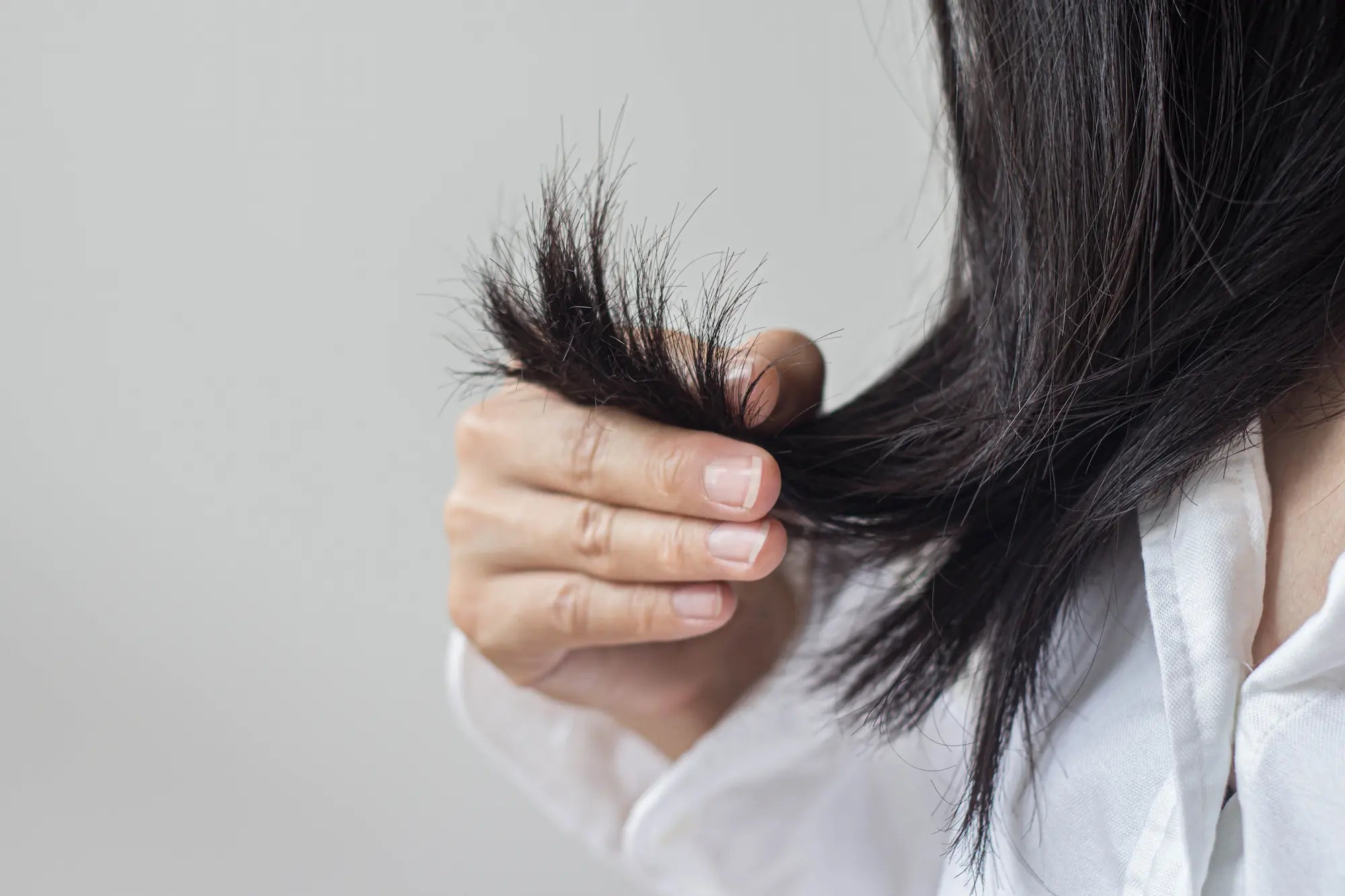
The presence of split ends is more than just an aesthetic concern; it's a red flag signaling deeper hair health issues. Let's delve into why split ends are problematic and how they influence overall hair appearance and growth.
Why Are Split Ends Considered Unhealthy?
Split ends signify a breach in the hair's natural defense mechanism—the protective cuticle. When this outer layer is compromised, the inner cortex of the hair becomes exposed, rendering it vulnerable to further damage. This structural compromise weakens the hair, making it prone to breakage and additional splitting. If left unaddressed, split ends can perpetuate a cycle of hair damage, leading to increasingly brittle and fragile strands.
Split Ends vs. Healthy Hair
Comparing split ends with healthy hair highlights these stark differences in appearance and texture:
- Healthy Hair: Smooth, shiny, and resilient, with a strong cuticle layer that protects the inner structures of the hair shaft.
- Hair with Split Ends: Dull, frizzy, and brittle, lacking smoothness and shine due to the damaged cuticle and exposed cortex.
Do Split Ends Stop Hair Growth?
While split ends themselves don't directly halt hair growth from the scalp, they can lead to shorter hair over time from breakage. Hair continues to grow at the root, but if split ends cause the hair to break off faster than growth, hair will seem to be at a standstill in length.
How To Prevent Split Ends

Preventing split ends is key to maintaining healthy, vibrant hair. Here are some strategies to help protect your hair from splitting:
- Regular Trims: Removes the damaged ends before they can split further up the shaft, keeping hair looking healthy and fresh.
- Minimize Heat Styling: Limit the use of heat styling tools and always apply a heat protectant spray or serum to shield the hair from high temperatures.
- Gentle Handling: Treat your hair with care, especially when wet. Use a wide-tooth comb to detangle gently, and avoid harsh brushing or pulling that can do damage to the hair.
- Protective Hairstyles: Opt for loose, protective hairstyles that minimize tension and friction on the hair. Tight ponytails, braids, and buns can exacerbate hair damage and contribute to split ends.
- Hydration and Nutrition: Keeping hair hydrated with regular deep conditioning treatments and hair masks can help maintain the integrity of the hair cuticle. Eating a balanced diet rich in vitamins, minerals, and proteins supports hair health from the inside out.
How To Get Rid Of Split Ends
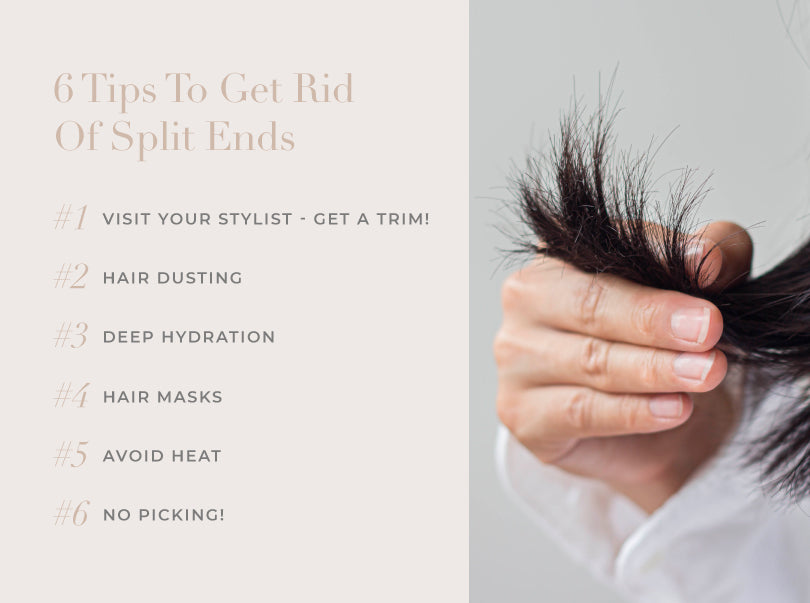
While the only definitive way to rid your hair of split ends is to trim them, there are ways to improve the appearance and condition of your hair in the meantime:
- Deep Conditioning Treatments and Hair Masks: Provide intense moisture and nourishment to dry, damaged hair, helping to smooth the cuticle and improve overall hair texture.
- Leave-In Conditioners and Hair Oils: Help seal the hair cuticle, reduce frizz, and add shine, making split ends less noticeable.
- Choosing the Right Products: Opt for shampoos, conditioners, and styling products specifically formulated for damaged or dry hair. Products free from harsh sulfates, alcohols, and unnecessary chemicals are gentler on the hair and help preserve natural oils.
Incorporating these strategies into your hair care routine can help reduce the occurrence of split ends and improve the health and appearance of your hair. Remember, prevention is key, and taking proactive steps to care for your hair will pay off in the long run.
Best Hair Care Products For Split Ends
Here at Goldie Locks® we’ve developed a line of hair care products, meticulously crafted to nourish, protect, and revitalize your locks from root to tip. Each product plays a vital role in split end management and overall hair health.
Best Shampoo for Split Ends
Our Signature Shampoo is crucial in the battle against split ends. Designed to gently cleanse while preserving your hair's natural moisture, this sulfate-free formula helps prevent the dryness that often leads to split ends. Enriched with nourishing ingredients, it strengthens the hair cuticle from the inside out, reducing the likelihood of future breakage and split ends.
Best Conditioner for Split Ends
A perfect companion to our Signature Shampoo, our Signature Conditioner takes your hair care routine to the next level. With its sumptuous formula, this conditioner penetrates deep into each strand, delivering unmatched hydration and smoothness. Its luxurious blend untangles and conditions, locking in moisture to repair existing split ends and prevent new ones from forming. With consistent use, your hair will emerge silkier, stronger, and better equipped to withstand the rigors of daily styling.
Best Leave-In Conditioner for Split Ends
For an added layer of protection, our Signature Leave-In Conditioner offers a weightless shield against the external factors that contribute to split ends. This leave-in miracle worker hydrates, detangles, and reduces frizz, making styling a breeze while infusing your hair with essential nutrients throughout the day.
Best Hair Serum for Split Ends
The Signature Hair Serum is a potent elixir designed to target split ends directly, providing a smooth, glossy finish without weighing down your hair. A few drops of this liquid gold can tame flyaways, seal in moisture, and add a protective coat to your hair's surface, preventing future split ends and promoting a healthy, vibrant shine.
Best Hair Mask for Split Ends
Our Signature Hair Mask is your best bet for an intensive treatment. This rich, restorative mask penetrates deep into the hair shaft to repair and revitalize from within, offering the ultimate hydration and strength to fend off split ends and breakage. Incorporate it into your weekly routine for hair that feels renewed and resilient.
Final Thoughts
Split ends serve as a reminder that our hair deserves our care and attention. Beyond being a mere cosmetic concern, they signal underlying issues that demand care. Understanding the ins and outs of split ends—from their causes to the various types and effective prevention methods—puts you in the driver's seat of your hair care routine.
By adopting a hair care routine centered around nourishment, protection, and regular maintenance, you can significantly reduce the occurrence of split ends and enhance your hair's natural beauty.
Our carefully curated selection of hair care products offers everything you need to tackle split ends head-on, from shampoos and conditioners to deep treatments and oils. It's time to give your hair the love and attention it deserves.


